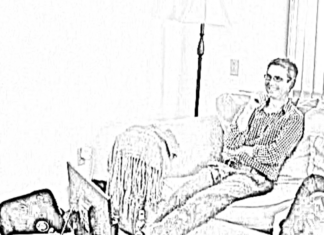Self awareness is one of our most precious skills as humans. It distinguishes us from other sentient beings and enables us to move past pain and suffering.
When we are in tune with our emotions, when we know why they arise, look at them without judgement and are willing to let them come and go, then we are able to lead a much more integrated and peaceful life than otherwise.
Words and actions are two of the tools that help us to create awareness.
The first tool (words) is used in talk therapy as well as in journaling. As soon as we get out of our thinking mind and put the thoughts into words (spoken or written), the jumbled mess of thoughts gets just a tad disentangled, and we gain more clarity and understanding about ourselves.
If we then take the insights we gained through words and integrate them into action, this is when a certain issue is truly made conscious. It was taken out of the prison of the unconscious mind and is brought to light.
An example for this dynamic is demonstrated impressively in an episode of the NPR show Radiolab that deals entirely with the topic of colors.
One of the segments discusses how the color blue became a part of our language and our lives.
The authors mention how the color blue was quite late to be mentioned in the records of our civilization and is missing from certain ancient texts like the bible or Homer’s poems. Other colors, like red and green, were much more commonplace.
One explanation for this is apparently that blue could not be reproduced as dye very easily as for example red.
Another example is the Namibian tribe of the Himba, whose members seem unable to differentiate the color blue when shown in comparison to other colors.
The reason for that is that there is no word for the color blue in their language.
These examples point to the fact that certain colors are not perceived when there is no word for it. If there is no word, there is no awareness. And if there is no awareness, there is no use of the color. Blue was only named when people started to dye products in that color with the help of the indigo plant.
So, colors only came into our awareness when we had a name for them, and ultimately when we used the action of dyeing to bring them into our everyday dealings.
A powerful example for creating awareness through language and action.


 Gerti Schoen is a psychotherapist for couples and individuals in private practice in NYC and Ridgewood, NJ. Her work has been informed by psychoanalytic thought, Imago Relationship Therapy, Mindfulness, Shamanic healing and Internal Family Systems Therapy. Before becoming a mental health professional, she had a fulfilling career as a journalist and writer in Germany. She has published two books, The Gentle Self and Buddha Betrayed.
Gerti Schoen is a psychotherapist for couples and individuals in private practice in NYC and Ridgewood, NJ. Her work has been informed by psychoanalytic thought, Imago Relationship Therapy, Mindfulness, Shamanic healing and Internal Family Systems Therapy. Before becoming a mental health professional, she had a fulfilling career as a journalist and writer in Germany. She has published two books, The Gentle Self and Buddha Betrayed.


















